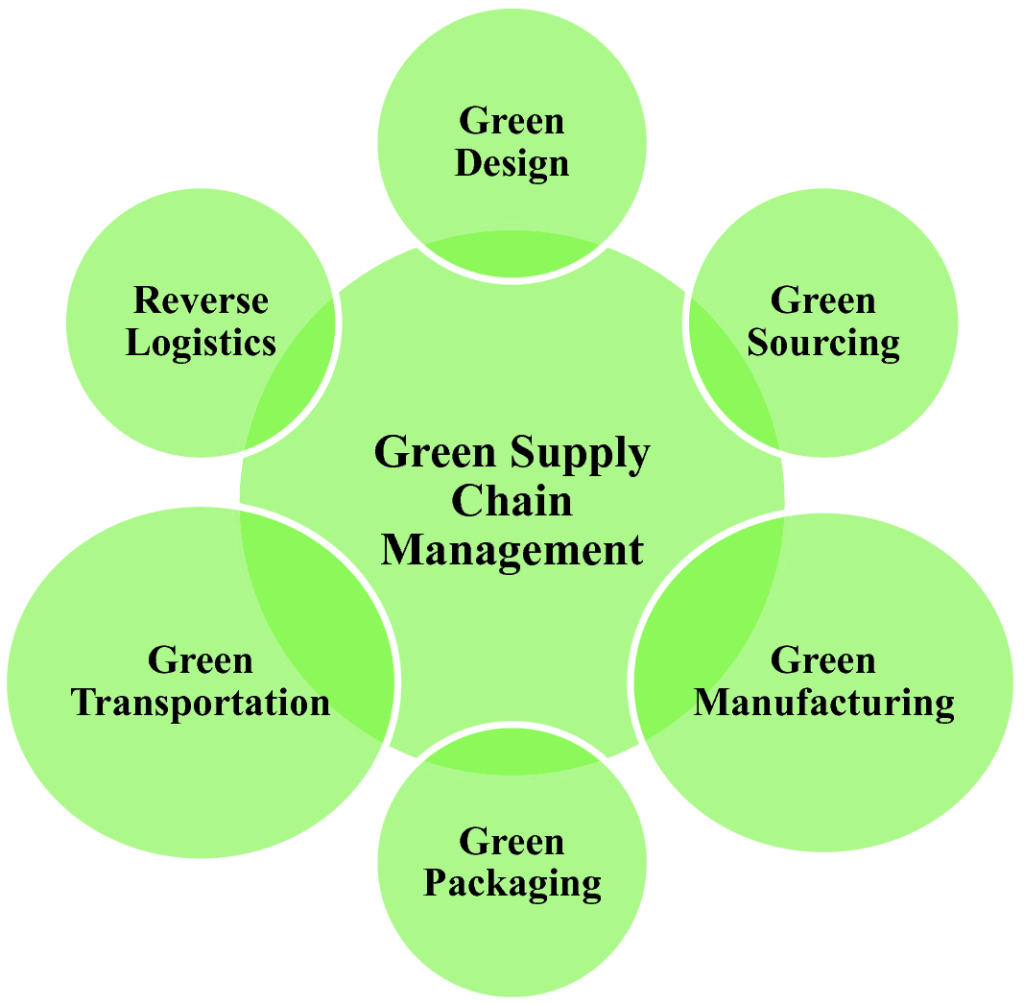Green supply chain is the concept of integrating environmentally sustainable practices into the entire supply chain process, from sourcing raw materials to delivering finished products to customers. It involves implementing eco-friendly initiatives throughout the supply chain to minimize environmental impact and promote sustainability. 
Here are some key aspects of green supply chain process and development:
- Sustainable Sourcing: Green supply chain starts with the sourcing of raw materials. Companies need to identify and select suppliers who follow sustainable practices, such as minimizing waste, reducing energy consumption, and using environmentally friendly materials. Supplier evaluation and audits can help ensure compliance with sustainability criteria.
- Logistics and Transportation: Green supply chain focuses on efficient logistics and transportation to reduce carbon emissions. Adopting alternative transportation methods, such as electric or hybrid vehicles, and optimizing routes can minimize fuel consumption and emissions. Collaborating with logistics partners who prioritize sustainability is also important.
- Packaging and Waste Reduction: Improving packaging efficiency and using eco-friendly materials can significantly reduce waste generation and environmental impact. Companies can explore options like using minimal packaging, opting for recyclable materials, and promoting recycling and reuse throughout the supply chain.
- Reverse Logistics: Implementing effective reverse logistics processes is vital to support the return, reuse, or recycling of products and materials. Green supply chain emphasizes the proper management of product end-of-life, ensuring that products are disposed of or recycled responsibly.
- Green Manufacturing Integration: Aligning green supply chain practices with green manufacturing principles creates a synergy of sustainability. By integrating eco-friendly manufacturing processes with green supply chain initiatives, companies can optimize resource utilization, minimize waste generation, and promote environmental stewardship throughout the entire production and distribution process.
- Supply Chain Visibility and traceability: To achieve sustainable supply chain practices, companies need visibility and traceability throughout the value chain. Tracking and monitoring the movement of materials and products help identify areas for improvement and ensure compliance with green supply chain standards.
- Collaboration and Partnerships: Developing collaborative relationships and partnerships with suppliers, customers, and stakeholders is crucial for implementing green supply chain processes. Engaging suppliers in sustainability initiatives, working with customers to promote sustainable choices, and involving stakeholders in sustainable decision-making create a shared responsibility for environmental stewardship.
- Continuous Improvement and Innovation: Green supply chain development is an ongoing process that requires continuous improvement and innovation. Companies must actively seek out new technologies, practices, and strategies to reduce environmental impact and promote sustainability throughout the supply chain.
Implementing a green supply chain process and development not only benefits the environment but also contributes to corporate social responsibility, enhances brand reputation, and can lead to cost savings in the long term. By adopting sustainable practices across the supply chain, companies can contribute to a more sustainable future and meet the evolving demands of environmentally conscious consumers.